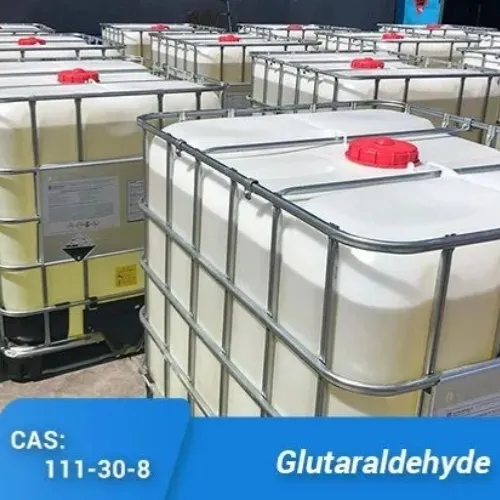Warning: Undefined array key "title" in /home/www/wwwroot/HTML/www.exportstart.com/wp-content/themes/1198/header.php on line 6
Warning: Undefined array key "file" in /home/www/wwwroot/HTML/www.exportstart.com/wp-content/themes/1198/header.php on line 7
Warning: Undefined array key "title" in /home/www/wwwroot/HTML/www.exportstart.com/wp-content/themes/1198/header.php on line 7
Warning: Undefined array key "title" in /home/www/wwwroot/HTML/www.exportstart.com/wp-content/themes/1198/header.php on line 7
- Afrikaans
- Albanian
- Amharic
- Arabic
- Armenian
- Azerbaijani
- Basque
- Belarusian
- Bengali
- Bosnian
- Bulgarian
- Catalan
- Cebuano
- China
- China (Taiwan)
- Corsican
- Croatian
- Czech
- Danish
- Dutch
- English
- Esperanto
- Estonian
- Finnish
- French
- Frisian
- Galician
- Georgian
- German
- Greek
- Gujarati
- Haitian Creole
- hausa
- hawaiian
- Hebrew
- Hindi
- Miao
- Hungarian
- Icelandic
- igbo
- Indonesian
- irish
- Italian
- Japanese
- Javanese
- Kannada
- kazakh
- Khmer
- Rwandese
- Korean
- Kurdish
- Kyrgyz
- Lao
- Latin
- Latvian
- Lithuanian
- Luxembourgish
- Macedonian
- Malgashi
- Malay
- Malayalam
- Maltese
- Maori
- Marathi
- Mongolian
- Myanmar
- Nepali
- Norwegian
- Norwegian
- Occitan
- Pashto
- Persian
- Polish
- Portuguese
- Punjabi
- Romanian
- Russian
- Samoan
- Scottish Gaelic
- Serbian
- Sesotho
- Shona
- Sindhi
- Sinhala
- Slovak
- Slovenian
- Somali
- Spanish
- Sundanese
- Swahili
- Swedish
- Tagalog
- Tajik
- Tamil
- Tatar
- Telugu
- Thai
- Turkish
- Turkmen
- Ukrainian
- Urdu
- Uighur
- Uzbek
- Vietnamese
- Welsh
- Bantu
- Yiddish
- Yoruba
- Zulu
Aug . 08, 2024 00:30 Back to list
Exploring the Properties and Applications of Chemical Compound with CAS Number 111-42-2
Understanding CAS Number 111-42-2 A Comprehensive Overview
CAS number 111-42-2 refers to a specific chemical compound known as diethanolamine (DEA). DEA is a viscous, colorless liquid that is primarily used in various industrial applications due to its unique chemical properties. This article provides an in-depth look at diethanolamine, its applications, safety considerations, and environmental impact.
Chemical Structure and Properties
Diethanolamine has the molecular formula C4H11NO2, characterized by two hydroxyl (–OH) groups and an amine (–NH2) group in its structure. This creates a compound that exhibits both hydrophilic and hydrophobic properties, making it highly versatile. The presence of the hydroxyl groups allows DEA to engage in hydrogen bonding, enhancing its solubility in water and making it an effective surfactant and emulsifier.
Industrial Applications
Diethanolamine finds a multitude of applications across various sectors. One of its primary uses is as a surfactant in detergents and household cleaning products. Its ability to lower the surface tension of liquids makes it an effective component in formulations aimed at enhancing cleaning efficiency.
Moreover, DEA is widely used in the production of personal care products such as shampoos and lotions, where it serves as a thickening agent and stabilizer. Its emulsifying properties are crucial in formulations that require oil and water to mix cohesively.
In agriculture, diethanolamine acts as an ingredient in herbicides and insecticides. It helps improve the effectiveness of these products by enhancing their adhesion to plant surfaces, thereby increasing pesticide performance.
Additionally, DEA is utilized in the production of coatings, plastics, and rubber products. Its role as a curing agent in epoxy resins contributes to the durability and effectiveness of these industrial materials.
cas number 111 42 2

Safety and Toxicological Concerns
Despite its widespread use, the safety of diethanolamine is a matter of concern. Prolonged exposure to DEA can lead to skin and eye irritation, as well as potential respiratory issues. It is classified as a possible human carcinogen by various health agencies, prompting regulatory scrutiny regarding its use in consumer products.
Safety measures, such as wearing appropriate protective gear and ensuring good ventilation, are recommended when handling DEA in industrial settings. Employers must conduct risk assessments to mitigate exposure and comply with occupational safety regulations.
Environmental Impact
The environmental impact of diethanolamine is also significant. As a water-soluble compound, DEA can enter aquatic environments through improper disposal or runoff. Once in water bodies, it poses a risk to aquatic ecosystems, potentially causing toxicity to fish and other aquatic organisms.
Regulatory agencies recommend monitoring the levels of DEA in water sources to safeguard against potential ecological harm. Efforts to develop biodegradable alternatives to diethanolamine are ongoing, as manufacturers seek to reduce their environmental footprint and enhance product sustainability.
Conclusion
Diethanolamine (CAS 111-42-2) is a valuable chemical compound with diverse applications across several industries, from cleaning products to agriculture and manufacturing. However, its potential health and environmental risks necessitate careful handling and regulatory oversight. As industries continue to innovate and prioritize safety and sustainability, the role of substances like diethanolamine will be examined, leading to the potential development of safer alternatives in the future. Understanding the properties, uses, and risks associated with DEA is crucial for any stakeholders involved in its manufacturing or application.
Latest news
-
Certifications for Vegetarian and Xanthan Gum Vegetarian
NewsJun.17,2025
-
Sustainability Trends Reshaping the SLES N70 Market
NewsJun.17,2025
-
Propylene Glycol Use in Vaccines: Balancing Function and Perception
NewsJun.17,2025
-
Petroleum Jelly in Skincare: Balancing Benefits and Backlash
NewsJun.17,2025
-
Energy Price Volatility and Ripple Effect on Caprolactam Markets
NewsJun.17,2025
-
Spectroscopic Techniques for Adipic Acid Molecular Weight
NewsJun.17,2025

